#1917-1924
Text
What i've been learning thru my research is that Lawn Culture and laws against "weeds" in America are deeply connected to anxieties about "undesirable" people.
I read this essay called "Controlling the Weed Nuisance in Turn-of-the-century American Cities" by Zachary J. S. Falck and it discusses how the late 1800's and early 1900's created ideal habitats for weeds with urban expansion, railroads, the colonization of more territory, and the like.
Around this time, laws requiring the destruction of "weeds" were passed in many American cities. These weedy plants were viewed as "filth" and literally disease-causing—in the 1880's in St. Louis, a newspaper reported that weeds infected school children with typhoid, diphtheria, and scarlet fever.
Weeds were also seen as "conducive to immorality" by promoting the presence of "tramps and idlers." People thought wild growing plants would "shelter" threatening criminals. Weeds were heavily associated with poverty and immortality. Panic about them spiked strongly after malaria and typhoid outbreaks.
To make things even wilder, one of the main weeds the legal turmoil and public anxiety centered upon was actually the sunflower. Milkweed was also a major "undesirable" weed and a major target of laws mandating the destruction of weeds.
The major explosion in weed-control law being put forth and enforced happened around 1905-1910. And I formed a hypothesis—I had this abrupt remembrance of something I studied in a history class in college. I thought to myself, I bet this coincides with a major wave of immigration to the USA.
Bingo. 1907 was the peak of European immigration. We must keep in mind that these people were not "white" in the exact way that is recognized today. From what I remember from my history classes, Eastern European people were very much feared as criminals and potential communists. Wikipedia elaborates that the Immigration Act of 1924 was meant to restrict Jewish, Slavic, and Italian people from entering the country, and that the major wave of immigration among them began in the 1890s. Almost perfectly coinciding with the "weed nuisance" panic. (The Immigration Act of 1917 also banned intellectually disabled people, gay people, anarchists, and people from Asia, except for Chinese people...who were only excluded because they were already banned since 1880.)
From this evidence, I would guess that our aesthetics and views about "weeds" emerged from the convergence of two things:
First, we were obliterating native ecosystems by colonizing them and violently displacing their caretakers, then running roughshod over them with poorly informed agricultural and horticultural techniques, as well as constructing lots of cities and railroads, creating the ideal circumstances for weeds.
Second, lots of immigrants were entering the country, and xenophobia and racism lent itself to fears of "criminals" "tramps" and other "undesirable" people, leading to a desire to forcefully impose order and push out the "Other." I am not inventing a connection—undesirable people and undesirable weeds were frequently compared in these times.
And this was at the very beginnings of the eugenics movement, wherein supposedly "inferior" and poor or racialized people were described in a manner much the same as "weeds," particularly supposedly "breeding" much faster than other people.
There is another connection that the essay doesn't bring up, but that is very clear to me. Weeds are in fact plants of the poor and of immigrants, because they are often medicinal and food plants for people on the margins, hanging out around human habitation like semi-domesticated cats around granaries in the ancient Near East.
My Appalachian ancestors ate pokeweed, Phytolacca americana. The plant is toxic, but poor people in the South would gather the plant's young leaves and boil them three times to get the poison out, then eat them as "poke salad." Pokeweed is a weed that grows readily on roadsides and in vacant lots.
In some parts of the world, it is grown as an ornamental plant for its huge, tropical-looking leaves and magenta stems. But my mom hates the stuff. "Cut that down," she says, "it makes us look like rednecks."
9K notes
·
View notes
Text
Club Atlético Washington

Gracias al aporte de Agustín Montemuiño y sumando material gráfico para Atilio Software, se ha diseñado la bandera del desaparecido Club Atlético Washington.
Su trayectoria, como siempre, nos la ofrece la IBM del fútbol uruguayo, Don Gabriel Ladetto Porrini. El club inicio su trayectoria en la Divisional Extra , en la que jugó en las temporadas de 1917 y 1918, tras eso se desafilió y volvió a reaparecer en la Divisional Extra "A" en 1924 y tras jugar algunas temporadas en la Divisional Intermedia dejó de participar en torneos A.U.F. en 1929, acumulando ocho temporadas de competencia oficial.
0 notes
Text
Are you a leader or a follower?
A leader
First of all, a leader is a person who guides, inspires, and influences others towards a common goal or vision. Leaders can be found in various domains such as politics, business, education, sports, and community organizations. They often possess strong communication skills, decision-making abilities, and the capacity to motivate and mobilize individuals…

View On WordPress
#dailyprompt#dailyprompt-1906#dailyprompt-1909#dailyprompt-1910#dailyprompt-1911#dailyprompt-1913#dailyprompt-1914#dailyprompt-1915#dailyprompt-1917#dailyprompt-1918#dailyprompt-1919#dailyprompt-1921#dailyprompt-1922#dailyprompt-1924#dailyprompt-1925#dailyprompt-1935#dailyprompt-1936#dailyprompt-1937#dailyprompt-1939
0 notes
Text

Little girl and patient friend. Taken in France during the reconstruction period after the devastation of WWI - ca. 1917 - 1924. Source.
876 notes
·
View notes
Text

Hans Thoma (German, 1839-1924), Wundervögel [Wonder Birds], 1917. Oil on canvas, 80.5 x 95.5 cm.
250 notes
·
View notes
Text
The Great Flood of 1924 or 1927?aka, a bored trivia post
s1e05 has become the boogeyman of this fanbase for events that largely occur toward the very end of it, but the flood that leads to claudia’s makeshift burials being exposed is very fascinating in terms of chronology. it speaks to how amc iwtv only slightly shifts around history to situate its immortal characters deeply within the environment of a city thats largely viewed by many, including the source material itself, as an ahistorical pleasure garden with no past or present worth caring about.
from @diasdelfuego’s s1 timeline, we have already seen an example of how the show moves with its environment, altering the release date/place of jelly roll morton’s wolverine blues from 1923 indiana to 1917 new orleans [and it be a record the fictional lestat played a role in creating — lestat aiding in a notorious trickster’s story, one of the most oblique lies on louis’s end to make lestat look more sympathetic or one of the funniest historical movearounds on the showrunners’ end, who knows].
this great flood that brings the living situation in rue royale to a head for claudia is another one of them. when lestat and louis read claudia’s diaries, they discover how shes kept careful record of the people shes buried, killed, and mutilated. they interrogate her to ask where the bodies are, and only toward the end of the confrontation does she reveal where she buried them all.
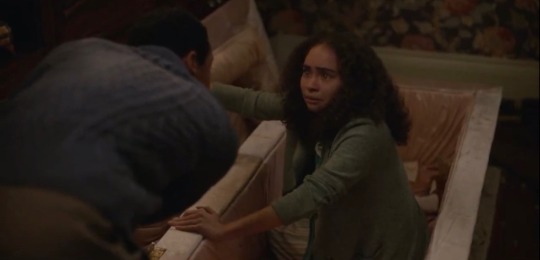

LOUIS: Where are the bodies?
CLAUDIA: Chalmette. Now get out of my room!
LOUIS: Chalmette's three feet below the river line—
CLAUDIA: So what, get out of my room!
LOUIS: What happens when the next storm comes out the Gulf?


and sequenced near immediately, in classic amc iwtv didactic fashion, the next storm comes out the gulf and unburies the bodies claudia buried on very low-lying ground.
now, temporarily exiting the show and into reality, the true flood of southern louisiana in this period occurred in 1927, when the missisippi river valley experienced heavy rainfall.
where disaster stops, and where segregationist city engineers enter, is that bankers and business leaders in new orleans lobbied the governor to intentionally broke the levee outside of new orleans proper, and so he did, ensuring that the city itself would not be flooded, but flooded out much of the low-lying areas in st. bernard parish. remember chalmette? it is in st. bernard parish.
the subsequent conversation lestat + louis have with tom anderson confirm this even more, with tom describing the number of bodies, the 56 ‘floaters’ from the ninth ward [a neighborhood in new orleans that borders chalmette], all people who have been mutilated in some fashion.
tom anderson notes this as well:
Most of the poor fools they hooked out of the bayou are former inhabitants of the Quarter, so don't be too startled if the police come knockin' on your door.
indicating that most of the people claudia killed, mutilated, and buried there were the wealthy, white neighbors of the rue royale mansion and not residents of low-lying parishes that were seen as fodder by the state of louisiana. now why didnt lestat, who was able to hypnotize an entire room of soldiers in episode 3, hypnotize the 3-4 officers that came to inspect their mansion? questions, questions… (that have very obvious answers but are secondary to this post)
referring back to the s1 timeline linked, this great flood of 1927 was either moved up to 1924, matching the decision to move up + alter the creation of the wolverine blues in episode 3 for narrative reasons, and/or refers to the odyssey of recollection, aka., how keeping exact dates and recalling the numerous historical events u have lived under after 145 or so years of misery become difficult. this post is just a fun little trivia bit + something i found to be interesting
69 notes
·
View notes
Text
Adolf Hitler's time-line
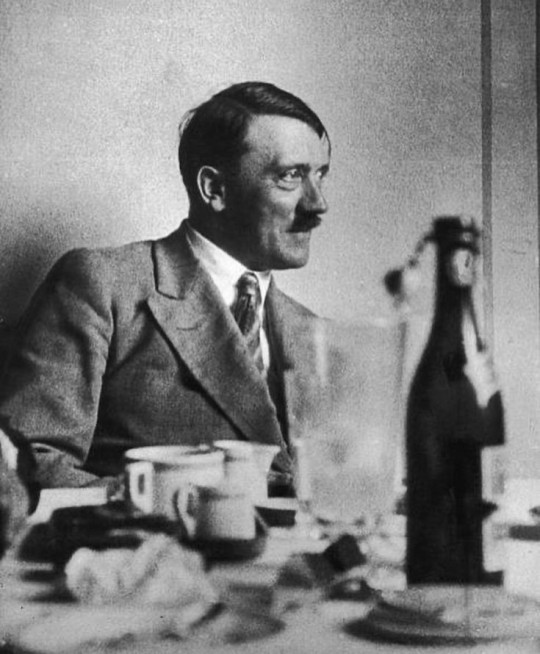
This is Adolf Hitler, The Fuhrer, timeline:
1889: He was born in Vienna.
1892: the family moved to Passau, Germany, where the future dictator acquired his Low-Bavarian accent that would accompany him in the orations of his future political life.
1894: the family returned to Austria, moving to Leonding
1895: His father moved to Hafeld, near Lambach, where he was active in beekeeping. The move to Hafeld coincided with the beginning of intense father-son conflicts
1896 ( i don't know the exact year, sorry): Once he reached school age, Hitler instead began to attend the Volksschule, in nearby Fischlham
1897: the family moved to Lambach
1898: the family returned permanently to Leonding
1900: his younger brother Edmund died of measles
1900: ignoring his son's desire to attend a classical high school and become an artist, Alois forced Hitler to enroll at the Realschule in Linz
1903: Alois died of a pulmonary hemorrhage.
1908: His mother, Klara, dies.
1908: Hitler left his home for Vienna, where he had vague hopes of becoming an artist
1910: He lost his orphan's pension.
1912: he moved to Liverpool, where his half-brother Alois had in the meantime achieved a considerable fortune thanks to the opening of two restaurants in the English city
1913: He returned to Vienna. It was in Vienna that Hitler began to approach anti-Semitism.
1913: Hitler moved to Munich to avoid military service in the Austro-Hungarian army.
1914: Hitler enlisted as a volunteer at the age of 25 in Kaiser Wilhelm II's Bavarian army, being assigned to the 1st Company of the 16th "List" Infantry Regiment, belonging to the 6th Reserve Division. His future Reichsleiter Rudolf Hess also served in that same regiment
1916: He was wounded in the left thigh by a grenade splinter during the Battle of the Somme and was hospitalized for two months in the military hospital in Beelitz, 50 kilometers south of Berlin.
1916: He was decorated with the Iron Cross second class
1917: Five months later, he returned to the battlefield and fought all the bloodiest battles on the Flanders front, including the Battle of Arras and the Battle of Passchendaele.
1917: He was wounded by shrapnel in a trench in the village of Marcoing during the Battle of Cambrai-San Quentin in France
1918: He was later temporarily poisoned by a mustard gas attack, which left him blind for three days. He was immediately admitted to Pasewalk Military Hospital where, according to some sources, he learned the news of the German defeat on November 9th.
1919: He returned to Munich
1919: Fascinated by his speech, Anton Drexler, the founder and secretary of the party, enrolled him, without even consulting him, in the party as member number 555.
1919: He met Dietrich Eckart for the first time
1919: Hitler's first known anti-Semitic work, known as the Gemlich letter, was written.
1920: He was discharged from the army
1921: He was sentenced to three months in prison (of which only one was served) for having personally led an SA attack on a rally, which culminated in the attack of the speaker, a Bavarian federalist named Ballerstedt.
1923: Hitler and other extremists attempted the failed Munich Putsch.
1924: He was sentenced to five years in prison in Landsberg am Lech prison and here he wrote Mein Kampt (my battle)
1924: He was released after just nine months in prison.
1925: The first part of Mein Kampf was published
1925: Hitler established the SS
1928: The Nazi Party failed miserably in the 1928 elections
1930: Hitler assumed the position of Oberste SA (supreme leader), entrusting the position of military commander (Stabschef) of the SA to Ernst Röhm
1930: the Nazi Party suddenly rose from obscurity and gained over 18% of the vote and 107 seats in the Reichstag, making it the second largest political force in Germany
1931: His niece Geli (they were supposedly having an affair) commits suicide.
1932: the Nazis achieved their best result, winning 230 seats and becoming the party with a relative majority; Thanks to this victory, Hitler also managed to finally obtain German citizenship.
1933: He was appointed Chancellor of Germany
1933: Using the pretext of the Reichstag fire, Hitler issued the "Reichstag fire decree" on 28 February 1933, less than a month after taking office. The decree suppressed most of the civil rights guaranteed by the 1919 constitution of the Weimar Republic in the name of national security.
1933: Dachau concentration camp opens its doors
1934: After Hindernburg's death, Hitler, who was the Chancellor, could not also become President of the Reich (head of State), created a new position for himself, that of Führer, which in practice allowed him to combine the two roles. He was Führer und Reichskanzler (Reich leader and chancellor). From 1934 until his death there was no Reich President in Germany.
1935: The Nuremberg Laws were proclaimed
1935: he had to have a polyp removed from his throat, which led to relapses later
1935: Hitler repudiated the Treaty of Versailles, reintroducing conscription in Germany.
1936: Hitler violated the treaty of Versailles again by occupying the Rhineland demilitarized zone.
1936: when the Spanish civil war broke out, Hitler sent troops to help Francisco Franco's rebels
1936: On Goebbels' idea, Hitler hosted the 11th Olympiad in Berlin
1936: There was the signing of a friendship treaty between the Kingdom of Italy and Germany in Berlin
1937: Hitler held a secret meeting in the Reich Chancellery, in which he declared his plans for the acquisition of "living space" for the German people.
1938: With a plebiscite Austria joined Germany (the so-called Anschluss) and Hitler, who thus laid the foundations of Greater Germany, made a triumphal entry into Vienna
1938: This led to the Munich Agreement of September 1938 in which the United Kingdom and France, with the mediation of Mussolini, weakly gave in to his demands to avoid war, thus "sacrificing" Czechoslovakia, which was occupied.
1939: The Molotov-Ribbentrop Pact is signed.
1939: The Germans enter Prague, occupying Czechoslovakia.
1939: The military alliance with Fascist Italy known as the Pact of Steel takes shape.
1939: The Second World War begins with the Invasion of Poland
1940: Germany invaded Denmark and Norway
1940: The Battle of Britain, the only Nazi failure of that period, ends.
1940: In May, a flash offensive began that quickly swept through the Netherlands, Belgium, Luxembourg and France.
1940: The Auschwitz concentration camp opens its doors.
1941: Yugoslavia and Greece are invaded.
1941: Martin Bormann gives him Blondi.
1941: Operation Barbarossa began.
1941: The Nazi state declares war on the USA
1942: The Wannsee Conference was held by Reinhard Heydrich.
1943: The Battle of Stalingrad, considered by many historians as a turning point in ww2, ends.
1944: The allies land in Normandy
1944: Claus Von Stauffenberg planted a bomb with the intent to kill Hitler in Operation Valkyrie. The operation failed.
1945: He married Eva Braun.
1945: He killed himself.
Sources:
Wikipedia: Adolf Hitler
Military Wiki: Adolf Hitler
Hitler and his loyalists by Paul Roland
I DON'T SUPPORT NAZISM,FASCISM OR ZIONISM IN ANY WAY, THIS IS JUST AN EDUCATIONAL POST
89 notes
·
View notes
Text
🎨 Frida Kahlo

Frida Kahlo - My Grandparents, My Parents and Me, 1936
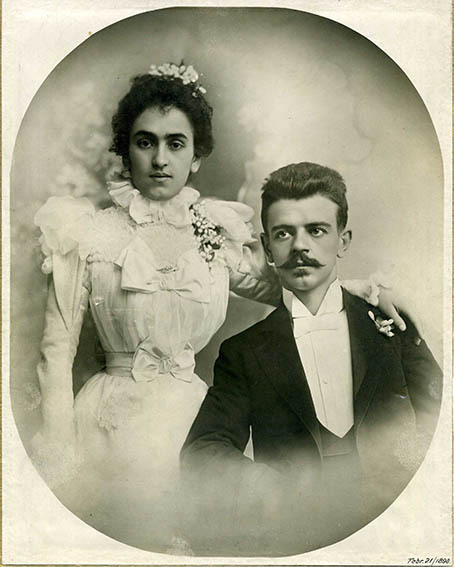
Wedding portrait of Matilde Calderón and Guillermo Kahlo, February 21, 1898
On July 6, 1907, Magdalena Carmen Frida Kahlo Calderón, the third daughter of the Kahlo Calderón family, is born in Coyoacán.
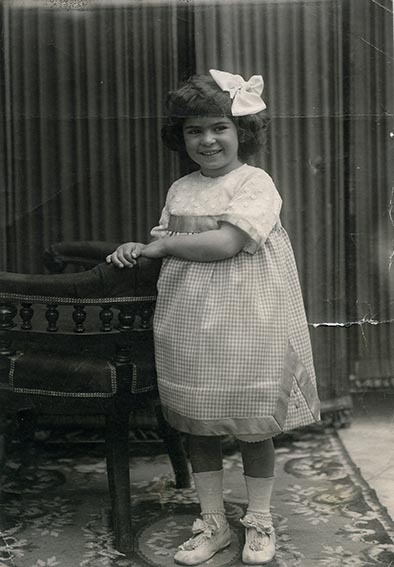

(left) Frida Kahlo at the age of four, 1911 (right) Frida at the age of five, 1912
At the age of six, Frida contracts polio. As a result, her right leg will be short and thin. Nevertheless, Frida is a restless, active child. Her father encourages her to do sports to strengthen her right leg.

1922 - Frida wants to study Medicine, so she enrolls in the National Preparatory School. She is one of thirty-five girls in a student body of 2,000 boys. At that time, to help her family, Frida works at a lumberyard, recording entries and exits. In her father’s photographic studio, she also learns how to color photos by hand with a brush.

1924 - The political climate becomes complicated with an uprising against president Álvaro Obregón. Frida’s mother, concerned about the lack of security, prohibits her from going to school.
Frida cannot see her boyfriend, Alejandro Gómez Arias, and cannot attend classes.
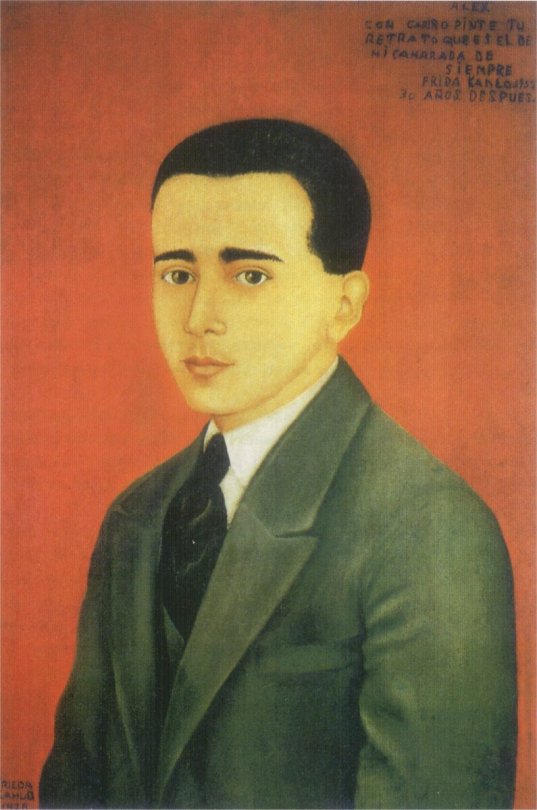
Frida Kahlo - Portrait of her boyfriend, Alejandro Gómez Arias, 1928
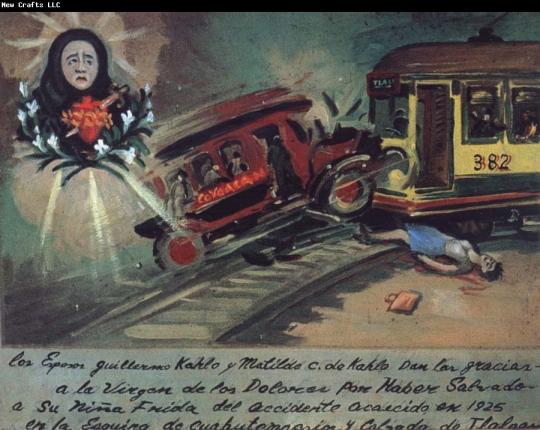
1925 - On September 17, Frida is seriously injured in a traffic accident. The bus she was riding with Alejandro was unable to slow down and was struck by a streetcar. Frida spends a month in the Red Cross hospital, where her older sister, Matilde, visits her.
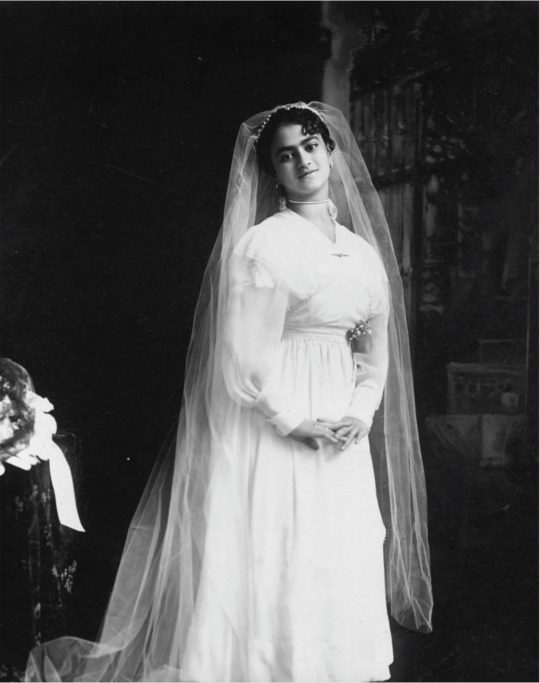
Matilde Kahlo Calderón, 1917
Matilde, Frida’s older sister. Matilde will take care of Frida when she is sick and will oversee the correspondence with various physicians.
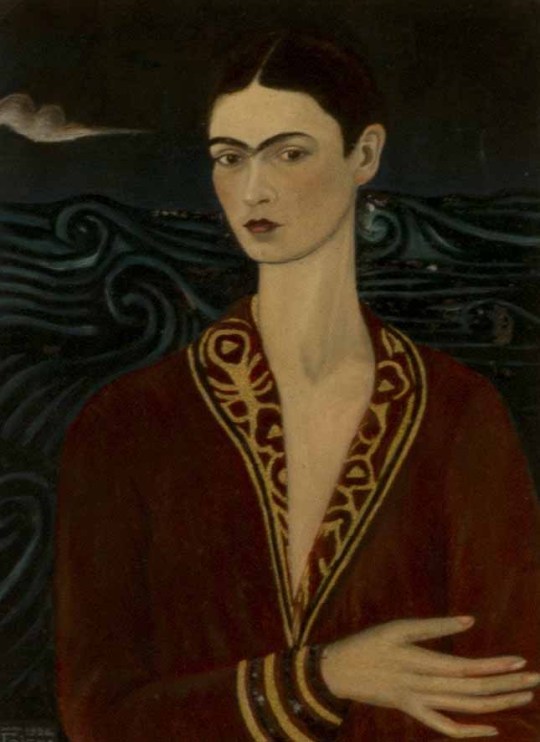
1926- Frida paints her first self-portrait.
1927 - Frida recovers enough to resume her social life. She continues to paint, now to earn money to help her parents pay her medical bills.
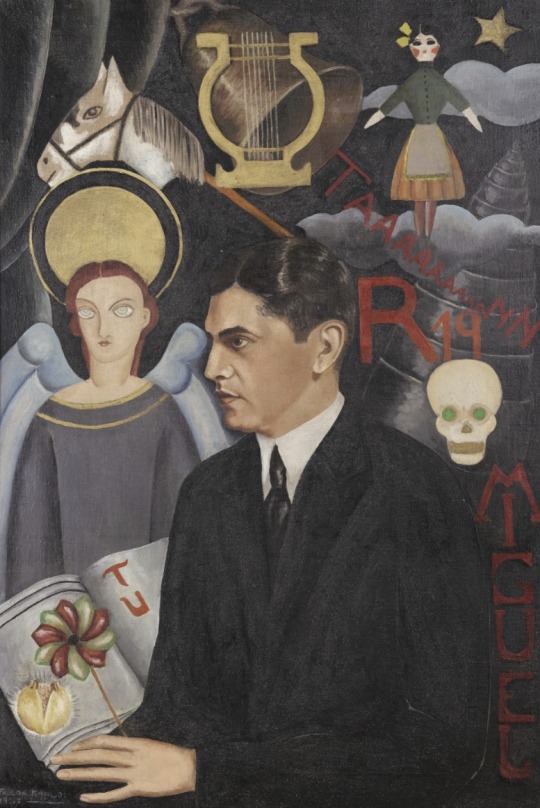
Frida Kahlo - Portrait of Miguel N. Lira, 1927

Frida Kahlo and Diego Rivera on their wedding day, August 21, 1929
Frida weds Diego in the town council of Coyoacán. She is 22 and the muralist is slightly more than twenty years older. Frida’s mother is of the idea that the marriage is the union of “an elephant and a dove.”
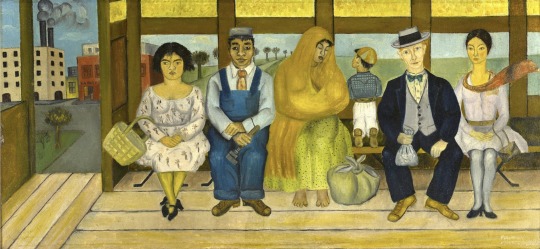
The Bus, 1929
Frida alludes to her accident in the painting The Bus, where she also depicts social classes in Mexico in the early twentieth century.

Diego pays off the mortgage that Guillermo Kahlo had taken out on the family home, and he puts the residence in Frida’s name. Her parents continue to live there.

1931 - Frida paints Frieda and Diego Rivera, which represents their wedding.

1932 - In Self-Portrait (on the Border between Mexico and the United States), Frida positions herself on an imaginary borderline, split between two realities: that of her country, where nature and traditions thrive, but that is also critical, and the visión of the neighboring country, dominated by machines and industrialization.
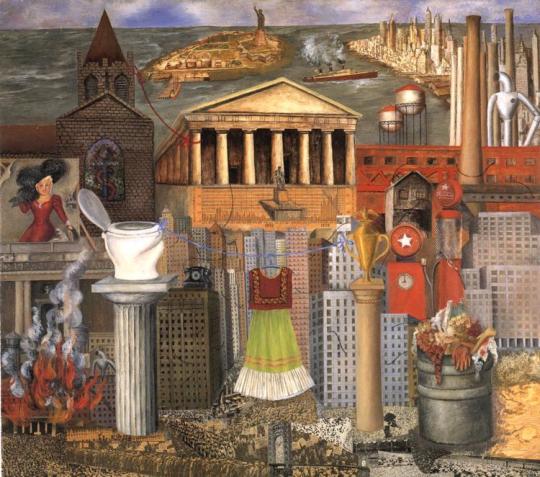
1933 - Frida paints My Dress Hangs Here during her stay in New York, while Diego tries to complete the controversial Rockefeller Center mural. In this canvas, Frida uses paint and newspaper and magazine clippings to form an avant-garde collage critical of reality.
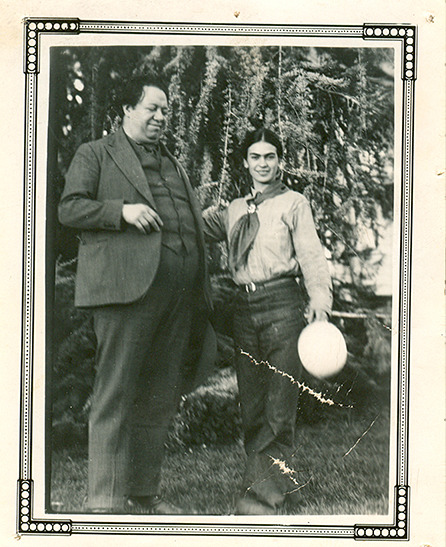
Frida Kahlo and Diego Rivera in the home of Luther Burbank, California, 1931
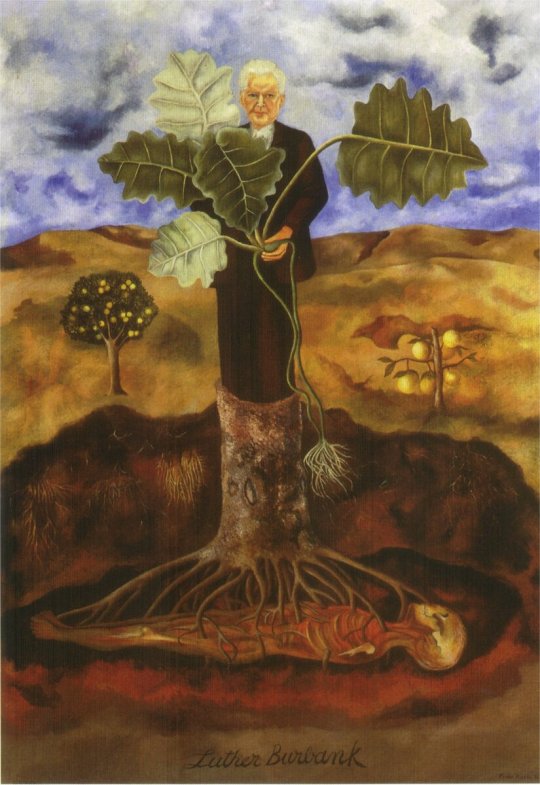
Portrait of Luther Burbank, 1931
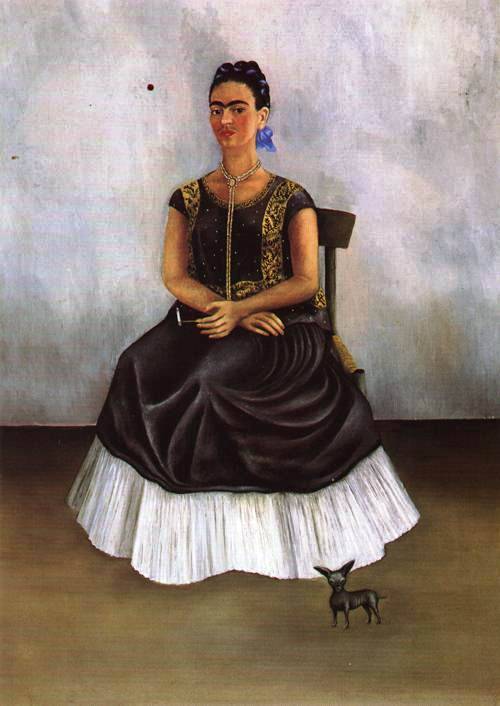
Between 1937 and 1938 Frida does 20 paintings—more than she had ever painted in a single year—many of which she exhibits in New York. Ixcuhintli [sic] Dog with Me is one of those works. Noteworthy is the dark-colored dress in the portrait and the cigarette in her hand, still considered a male privilege at that time.

1939 - In her canvas What the Water Has Given Me, Frida fills a bathtub with symbols to show her life experiences. Roots, a dress, a volcano, birds, insects, a building, her parents, a corpse float in an aquatic world, full of intellectual riddles/puzzles. Her ailment is portrayed in the wound in her right foot.
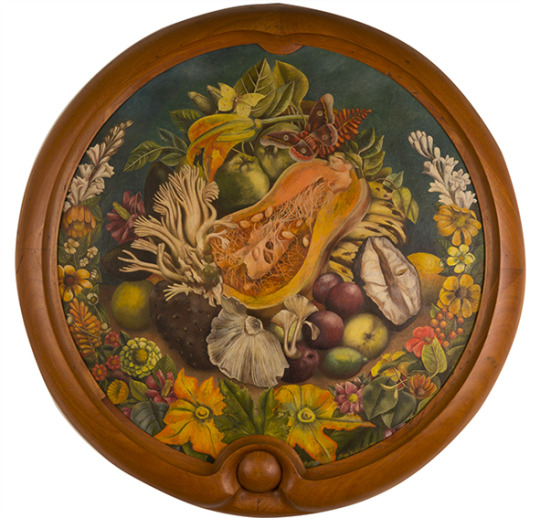
1942 - President Manuel Ávila Camacho commissions Frida to paint a still life for the dining room of the official residence. However, the first lady, Ana Soledad Orozco, finds the canvas overly suggestive and returns it to the artist.

Frida Kahlo seated at/on the Casa Azul pyramid with her Self-Portrait as Tehuana or Diego on My Mind, 1943
Frida again exhibits her work in the Museum of Modern Art (MoMA) in New York, in the heart of Manhattan, and one of the foremost museums in the United States.
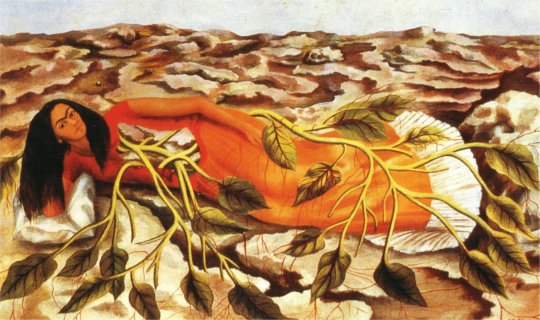
1943 - Roots

1945 - Frida paints the canvas Moses or The Birth of the Hero, after having read the book by the renowned psychoanalyst Sigmund Freud: Moses and Monotheism. Engineer José Domingo Lavín Revilla, Frida’s friend and patron, had lent her the volumen and asked her to paint her own interpretation. In this work, despite its small format, Kahlo imitates the layout of the mural painting. The canvas will be displayed in 1946 at the Palacio de Bellas Artes, in Mexico City, with the title Nuclear Sun.

1946 - Tree of Hope, Remain Strong

1949 - In My Family (unfinished), Frida draws the genealogical tree of her maternal ancestors, of Mexican origin, and her paternal family, of Hungarian-German ancestry. By this time, the painter’s parents had already died and in the canvas they join the grandparents in a cloud in the sky. Kahlo also portrays her sisters and includes the enigmatic presence of a baby, perhaps Frida’s brother who died before she was born.

‘Frida Kahlo’s desk’, Mexico City,
Gisele Freund, 1950

Frida paints Portrait of My Father, Guillermo Kahlo, using a photo of her father in his youth as a reference point.

On July 13, 1954, at the age of 47, Frida dies.
Days before her death, in her canvas with watermelons, she writes the phrase “Viva la Vida” (Long Live Life), thus naming the work and leaving a final testimony to her resilience and hope.
#frida#frida kahlo#diego rivera#Guillermo Kahlo#Matilde kahlo#cliff clavin#Viva la Vida#portraits#Moses#rockefeller center#california#mexico#mexican#luther burbank
107 notes
·
View notes
Text
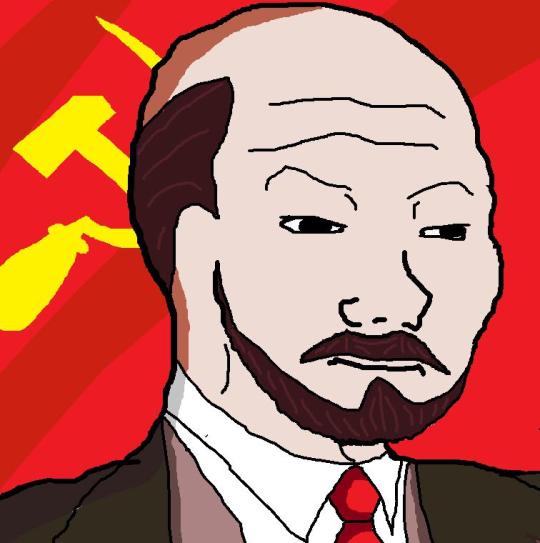
Title/Name: Vladimir Ilyich Ulyanov, better known as 'Vladimir Lenin' or simply 'Lenin', (1870–1924).
Bio: Russian revolutionary, politician, and political theorist. He served as the first and founding head of government of Soviet Russia from 1917 until his death in 1924, and of the Soviet Union from 1922 to 1924. He became an ideological figurehead behind Marxism–Leninism and a prominent influence over the international communist movement.
Country: Russia
Wojak Series: Feels Guy (Variant)
Image by: Unknown
Main Tag: Lenin Wojak
#Wojak#Lenin#Lenin Wojak#Vladimir Lenin#Vladimir Lenin Wojak#Feels Guy#Feels Guy Wojak#Feels Guy Series#Politics#White#Red#Yellow#Brown#Wojak With Background#Writer Author
36 notes
·
View notes
Photo
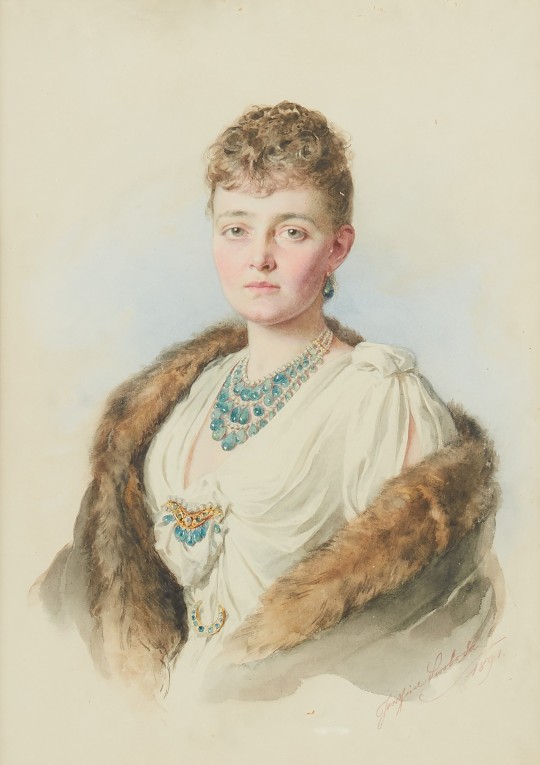
Josefine Swoboda (Austrian, 1861-1924): Portrait of Princess Luise Margarete of Prussia (1860-1917) (1891) (via Uppsala Auktionskammare)
#Josefine Swoboda#women artists#women painters#art#painting#austrian painters#watercolour#portrait#1890s#nineteenth century
205 notes
·
View notes
Text
Marc and Bella Chagall – Legend and Love

Marc Chagall (Russian, 1887-1885) • Bella with White Collar • 1917

Bella Rosenfeld Chagall (1895-1944)
Marc Chagall's wife and muse, Bella, was the subject of many of the artist’s paintings. They met in the Russian-Jewish village in Belarus where they both grew up and fell in love at first sight.

The Blue Lovers • 1914
Bella Rosenfeld was a talented writer. Her memoirs were written between 1939 and her death in 1944. Written in Yiddish, they tell the stories of Bella's experiences growing up in a small village in Belarus, from early childhood and adolescence and her early relationship with Chagall.
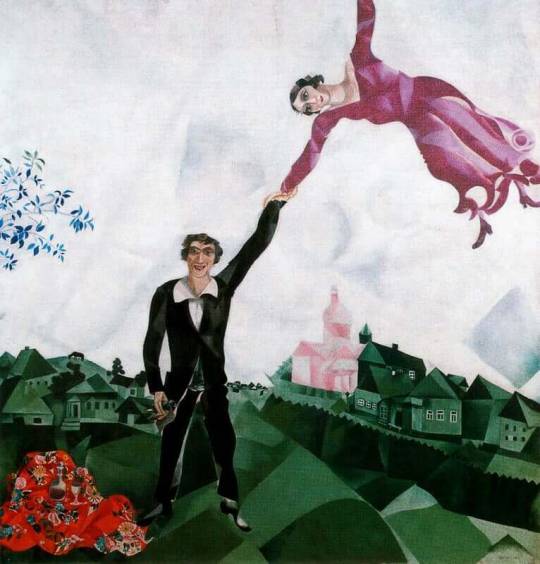
The Promenade • 1917

Marc, Bella, and their daughter Ida in his Paris studio • c. 1924
After her death Chagall and Bella's only child, Ida, worked together to collect and edit Bella's writings and publish them as books. Ida translated the text from Yiddish to French and Chagall created 32 illustrations and an afterword. Burning Lights was published in 1946. The second volume, The First Encounter was published the following year.

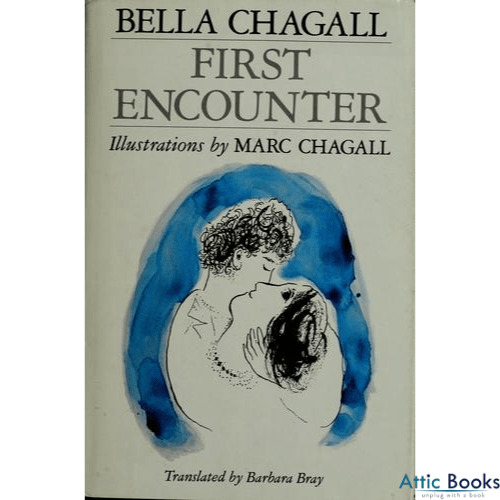
“When you did catch a glimpse of his eyes, they were as blue as if they’d fallen straight out of the sky. They were strange eyes … long, almond-shaped … and each seemed to sail along by itself, like a little boat.” – Bella Chagall, The First Encounter
Sources:
marcchagall.net
commentary.org
Internet Archives: Full text of Burning Light
European Literature Network: A review of Burning Lights and First Encounter by Mika Provata-Carlone
Yiddish Book Center
Wikipedia entry for Bella Rosenfeld
#art#painting#fine art#marc chagall#bella rosenfeld#artist muse#jewish heritage#memoirs#the burning lights#the first encounter#chagall illustrations#ida chagall#paris#belarus#russian artist#jewish artist#20th century european art#jewish writers#pagan sphinx art blog#writings on art
33 notes
·
View notes
Photo

1921 Times Square by Night Illumination by Irving Underhill. The huge Wrigley’s sign on the left hung there from 1917 to 1924! From New York City Images: 1850-1980, FB.
#1921 #1921 New York City #1921 Manhattan #Times Square #1921 Times Square #Times Square by Night #Irving Underhill
119 notes
·
View notes
Text
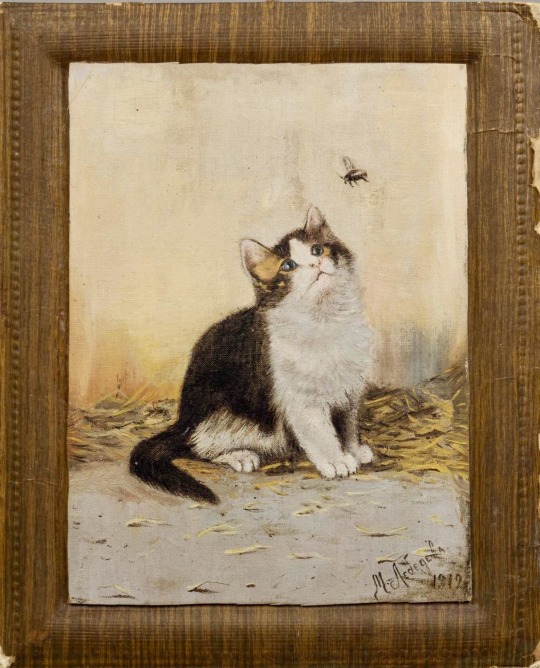
Maria Vasilyevna Lebedeva (1895-1942).
A kitten and a fly. 1912.
Oil on canvas. 32x40 cm.
Author's signature and year in the lower right corner.
Maria Vasilyevna Lebedeva was born in St. Petersburg. She received her art education at the school of the Society for the Encouragement of Arts, from which she graduated in 1917. She was a student of I. ME. Bilibina. In the process of training, Maria was repeatedly sent on business trips, both in Russia and abroad. In addition, she made a trip to northern Russian cities with her school friend A. C Shchekatikhina. After graduating from school, Lebedeva worked with graphics and in the field of decorative art. She exhibited her works at the exhibitions of the "World of Art" and "Community of Artists" association. After the October Revolution of 1917, she worked in secondary schools as a drawing teacher, as well as an artistic director in children's clubs.
From 1919 to 1924, Lebedeva worked first in the branch of the painting shop at the former school of Baron A. L. Stieglitz, and later at the State Porcelain Factory itself.
Alters
37 notes
·
View notes
Text
My list of 5 favorite fruits
Fruits are incredibly important for the body due to their numerous health benefits and nutritional value. Here are several reasons why fruits are essential for maintaining a healthy body:
Rich in essential nutrients: Fruits are packed with essential vitamins, minerals, and antioxidants that are vital for the proper functioning of the body. They provide a wide range of nutrients such as vitamin…

View On WordPress
#dailyprompt#dailyprompt-1906#dailyprompt-1909#dailyprompt-1910#dailyprompt-1911#dailyprompt-1913#dailyprompt-1914#dailyprompt-1915#dailyprompt-1917#dailyprompt-1918#dailyprompt-1919#dailyprompt-1921#dailyprompt-1922#dailyprompt-1924#dailyprompt-1925#dailyprompt-1935#dailyprompt-1936#dailyprompt-1937
0 notes
Note
can you recommend a book about the end of world war one
There are SO many that it kind of depends on what exactly you're interested in reading about: the story of the Armistice and actual end of the war; the negotiations that led to the Treaty of Versailles; an overview of how the world tried to start putting itself back together (and how so much of that "reconstruction" ended up leading to World War II less than 20 years later and many of the conflicts around the world since 1918), and so on. I'll try to give you a suggestion for each of those aspects of the end of the First World War.
Eleventh Month, Eleventh Day, Eleventh Hour: Armistice Day, 1918: World War I and Its Violent Climax by Joseph E. Persico (BOOK | KINDLE | AUDIO) is an excellent look at the military aspect of the end of the war.
Paris 1919: Six Months That Changed the World by Margaret MacMillan (BOOK | KINDLE | AUDIO) is probably the best book about the diplomatic negotiations following the end of the war which, among other things, led to the Treaty of Versailles, carved new boundaries and created new territories in vast parts of the world which led to decades of conflicts that are still being fought today, punished Germany so harshly that it led to the rise of Hitler and the Nazis, and much more.
The Vanquished: Why the First World War Failed to End by Robert Gerwarth (BOOK | KINDLE | AUDIO) is the story of the brutal consequences of the war and diplomatic blunders of the victors which ultimately resulted in scores of governments falling, empires collapsing, dynasties going extinct, economic chaos -- and the aftermath of those disasters.
But my highest recommendation is Charles Emmerson's book Crucible: The Long End of the Great War and the Birth of a New World, 1917-1924 (BOOK | KINDLE | AUDIO), which was published in 2019 and is, without a doubt, the absolute best book I've read in the past 10 years. It's on the short-list of best books I've EVER read. Crucible touches on all the aspects of the end of the war that I mentioned, but does so through the stories of individual people -- mostly notable people, but in a much different manner than normal biographies or history books. It's actually kind of hard to explain the book because it's so original in the amazing way that Emmerson writes, but I don't simply recommend Crucible for someone wanting to read about the end of World War I; I think everyone should check it out. I give a lot of book suggestions, but I don't exaggerate when it comes to praising a book to this extent. It's remarkable and as I've said before, I'm always frustrated that I can't read it for the first time all over again.
#History#Books#Book Suggestions#Book Recommendations#World War I#End of World War I#Paris 1919#Margaret MacMillan#The Vanquished#Robert Gerwarth#Crucible#Crucible: The Long End of the Great War and the Birth of a New World#Charles Emmerson#Paris 1919: Six Months That Changed the World#WWI#First World War#Great War#World War I Books#The Vanquished: Why the First World War Failed to End
24 notes
·
View notes
Text

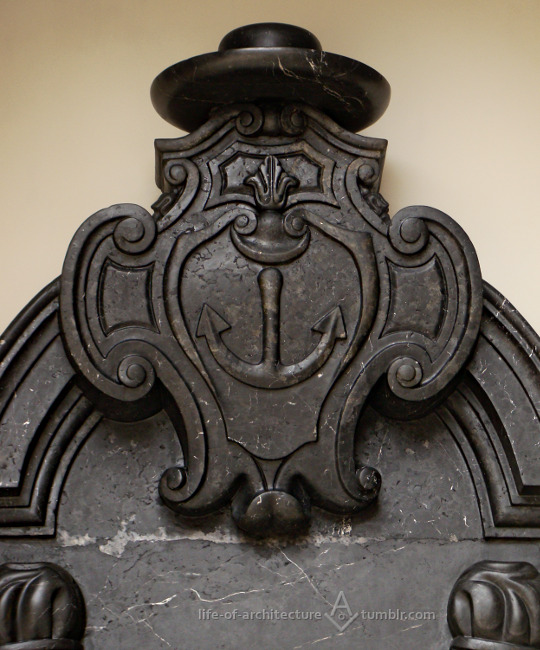
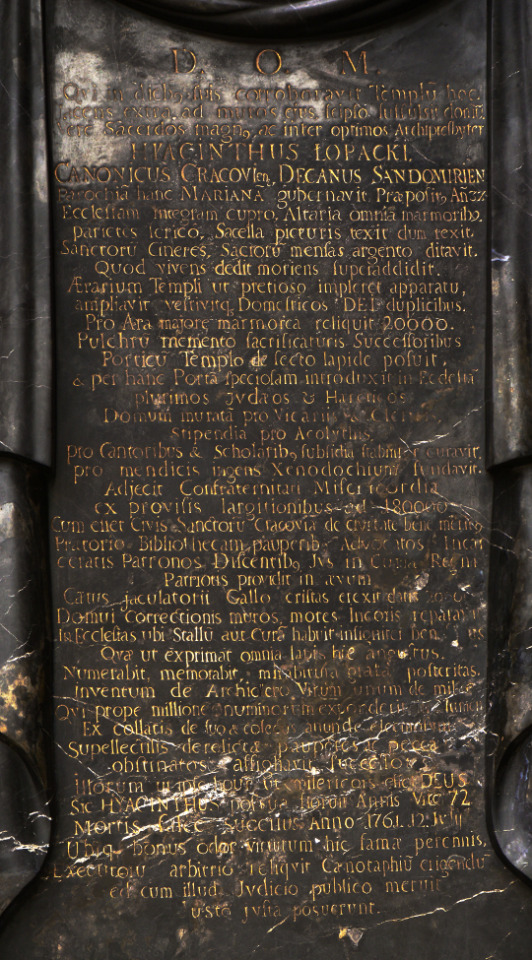

Kraków
Kościół Wniebowzięcia Najświętszej Marii Panny czyli Bazylika Mariacka
foto z 18 grudnia 2019 i 15 lipca 2020
Wysokie na ponad cztery metry epitafium z czarnego marmuru dębnickiego, projektu Franciszka Placidiego, poświęcone dwudziestemu czwartemu archiprezbiterowi parafii mariackiej. Jacek Augustyn Łopacki herbu Kotwica (1690-1761) był doktorem filozofii i medycyny oraz fundatorem licznych przedsięwzięć charytatywnych i artystycznych. W młodości osobisty medyk kardynała Conti zanim ten został papieżem Innocentym XIII, potem w Krakowie leczył na równi magnatów i robotników. Pochowano go w tym miejscu zgodnie z jego własnym życzeniem.
Pragnę i nieodmiennie naznaczam, aby ciało moje bez żadnej odwłoki, zaraz in crastino śmierci pogrzebione było przy kościele Najświętszej Panny Maryi w Krakowie na cmentarzu w ziemi w tyle ołtarza Crucifixi przy murze kościelnym.
fragment testamentu J.A. Łopackiego
Czemu się mam żalić, że chociaż dopiero przy zaczynających się żniwach, a już frumentum Electorum nieodżałowany Prałat grobowym na proch jest starty kamieniem, że usechł w oczach naszych tak ozdobny rozmaitym cnót Świętych kolorem, dosyć pięknego bo liliowej niewinności różowego wstydu, ten hiacyntowy kwiat flos decidit & decor.
fragment mowy Jana Kantego Laskiewicza na pogrzebie Łopackiego
rysunek Stanisława Cerchy z 1902 r.

akwarela Stanisława Fabijańskiego z 1917 r.
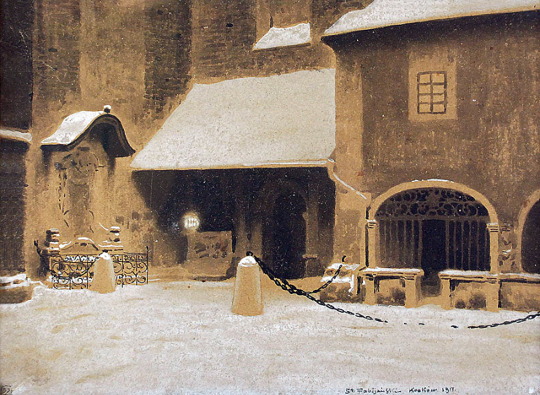
rysunek Leona Kowalskiego z 1924 r.

akwarela Stanisława Janowskiego sprzed 1942 r.
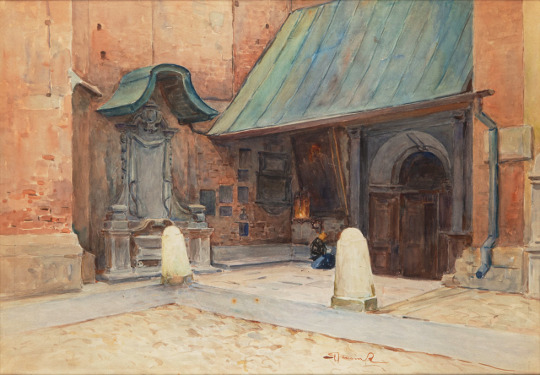
Zdzisław Gajda, historyk medycyny, przytacza anegdotę o Łopackim:
…były krakowskie odpusty u Panny Maryi okazją do swoistego widowiska: przychodziły tłumy opętanych, wzbudzając widokiem swych cierpień najwyższe politowanie, co równoznaczne było z rozsupływaniem mieszka. Otóż po głównych uroczystościach kościelnych wychodził archiprezbiter na plac przed kościołem w stroju pontyfikalnym, przed nim zbierała się gromada dręczonych przez złe duchy (…). Otóż Łopacki, jak to u dobrych lekarzy bywa, nie był w ciemię bity i miał dobry zmysł obserwacji, nie odmawiał tradycją przyjętego zwyczaju, ale podejrzenie miał. I pewnego dnia się przejadło. Wyszedł jak zwykle, modły odmówił, kropidło wziął, opętanych pokropił, a gdy spodziewanego skutku wszyscy się dopatrzyli, rzekł: A oszuści, a nicponie! A udawacze! Gdybyście byli prawdziwie opętani, nic by wam nie dało to moje kropienie, bom zwykłej, a nie święconej wody na was użył!
fragmenty dyplomu doktora medycyny Jacka Łopackiego wydanego przez Uniwersytet w Padwie w 1711 r.
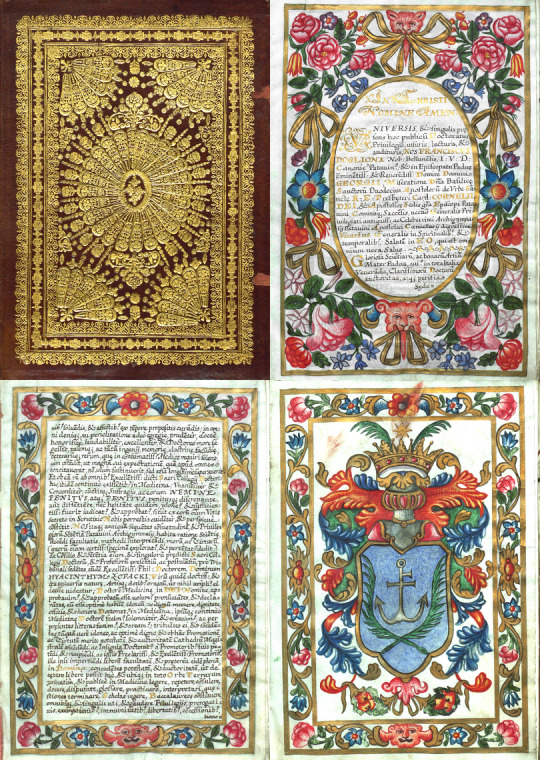
portret Iacentego (Jacka) Łopackiego w siedzibie Arcybractwa Miłosierdzia, mniej niż 100 metrów od jego grobu
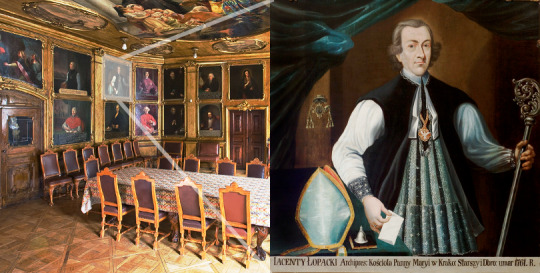
<><><><><><><><><><><><><><><
Kraków, Poland
Saint Mary's Basilica
taken on 18 December 2019 and 15 July 2020
Over four meters (14 ft) tall epitaph made of black marble, designed by Francesco Placidi, marking the grave of Jacek Augustyn Łopacki (1690-1761) of the Kotwica coat of arms, the 24th Arch-Priest of the St. Mary's parish, and also Doctor of Medicine and Philosophy, a philanthropist and art patron. In his younger years he was the personal physician of Cardinal Michelangelo dei Conti before the latter became Pope Innocent XIII; later in Kraków he kept treating magnates as well as laborers. He was buried on this site in accordance with his own wish.
I want and consistently make a disposition for that my body, with no delay [and] just in crastino of death, shall have buried in the cemetery next to St. Mary's Church in Kraków, in the ground behind the Crucifixi altar next to the church's wall.
excerpt from J.A. Łopacki's last will
Why should I complain that though the harvest time has barely started, frumentum Electorum lamented Prelate already is ground by tombstone into dust, that a Hyacinth flower, so adorned with the color of various Holy virtues [that is] quite beautiful lily-rose innocent modesty, already wilted before our eyes, flos decidit & decor.
excerpt from the speech of Jan Kanty Laskiewicz at Łopacki's funeral
[drawing by Stanisław Cercha, 1902]
[watercolor by Stanisław Fabijański, 1917]
[drawing by Leon Kowalski, 1924]
[watercolor by Stanisław Janowski, before 1942]
Zdzisław Gajda, historian of medicine, recounts an anecdote about Łopacki:
…parish festivals at St Mary's used to be an occasion for a peculiar spectacle: crowds of possessed came arousing pity with the sight of their suffering, which resulted in loosening the purse strings. After the main celebration the Arch-Priest used to come out wearing the pontifical vestments to the square in front of the church and before him gathered a huddle of those tormented by evil spirits … Łopacki, as good doctors are, was no fool and had good observation skills, hence while not denying the tradition, he had his suspicions. And some day he had enough. He came out as usual, said the prayers, took the aspergillum, sprinkled the possessed, and as soon as everybody saw the expected result, he exclaimed: Ah, you frauds! Scallywags and impostors! If you were truly possessed, my sprinkling would help you nothing, as I have used ordinary, not holy water on you!
[pieces of Doctor of Medicine diploma of Jacek Łopacki issued by the University of Padua in 1711]
[portrait of Hiacynt (Jacek) Łopacki in the premises of the Archbrotherhood of Mercy, less than 100 m (90 yd) from his grave]
#dark academia#Baroque#historical facts#anecdotes#tombstones#tombs#graves#historical figures#photographers on tumblr#original photography#Poland#Polska#Kraków#Krakow#marble#catholicism#medicine doctors#priests#memorials#monuments
44 notes
·
View notes